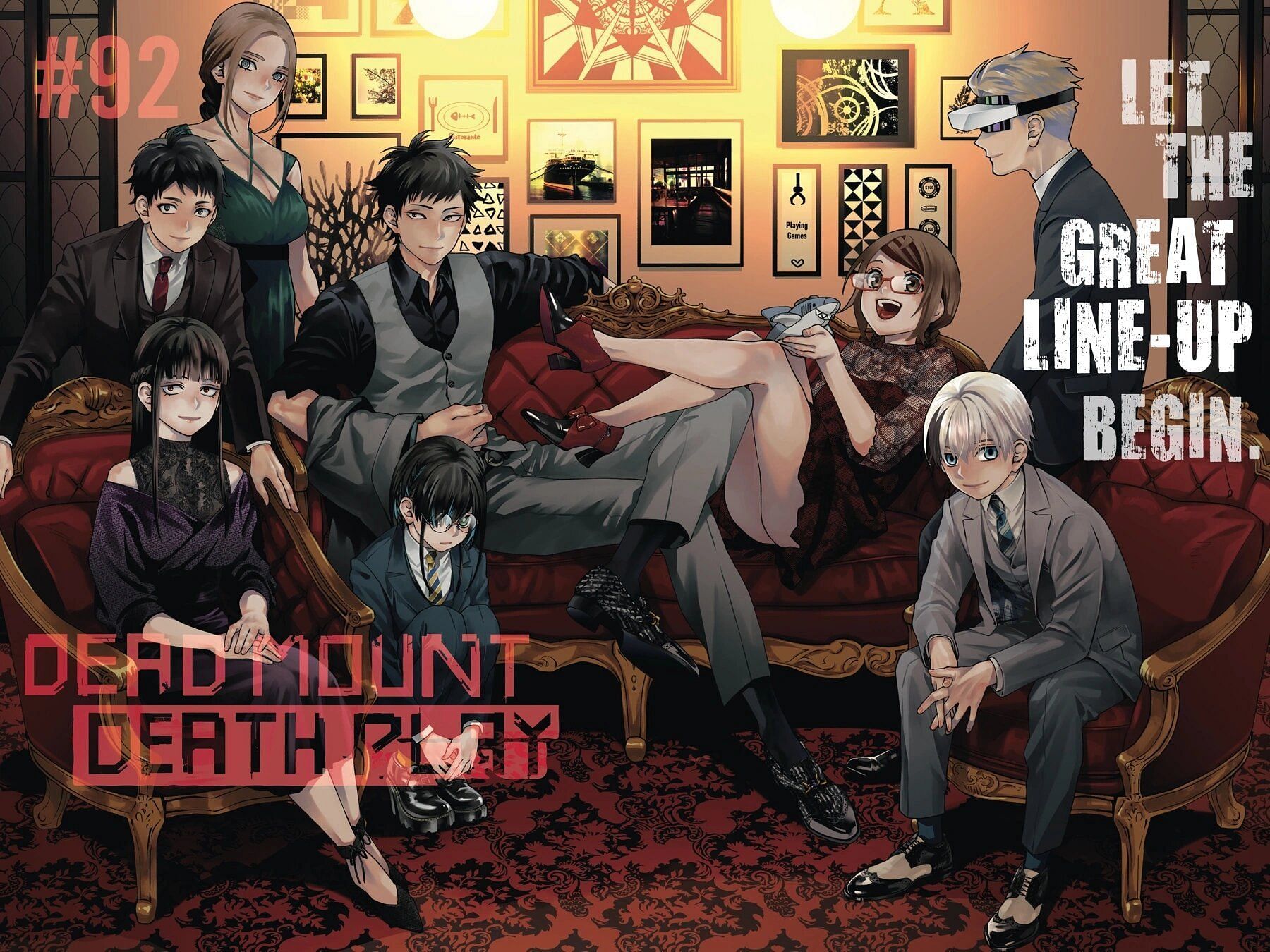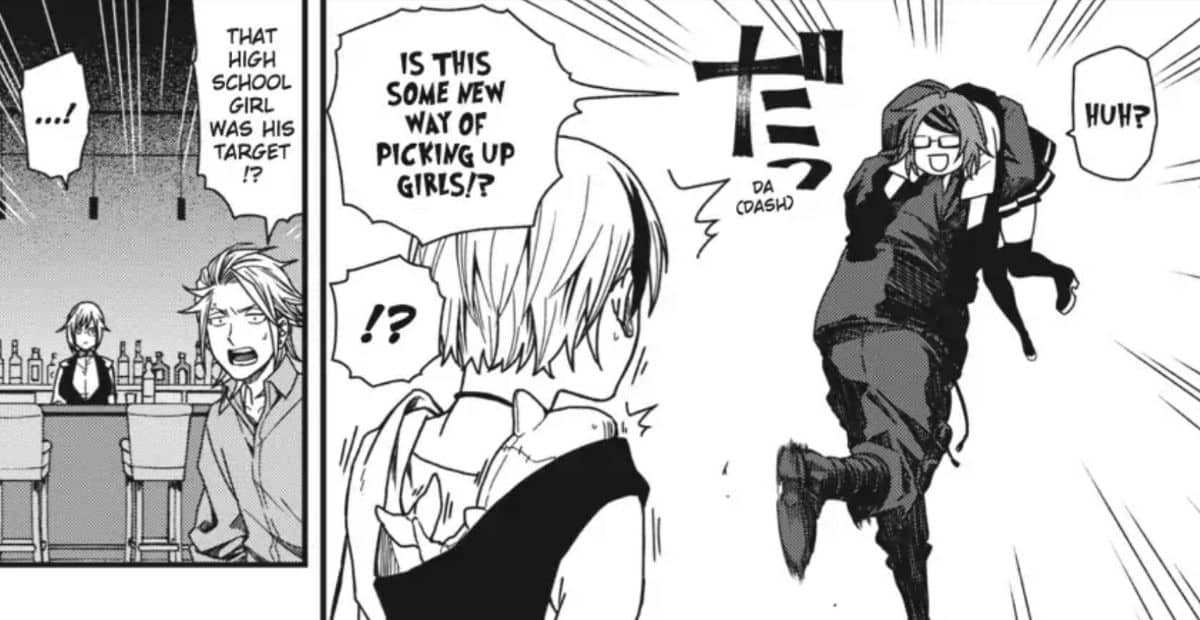Embarking on a journey into Dead Mount Death Play Chapter 2, we delve into a realm of complex character relationships, potent symbolism, and captivating dramatic structure. The chapter unfolds a tapestry of motivations, conflicts, and transformations that shape the narrative’s intricate web.
Through the lens of literary analysis, we uncover the significance of key symbols and metaphors, unraveling their contribution to the play’s overarching meaning and atmosphere. The structure of the chapter, with its skillful use of dialogue, stage directions, and scene transitions, orchestrates a symphony of pacing and tension.
Character Dynamics

The complex relationships between the main characters of Dead Mount Death Play Chapter 2 drive the plot forward and create a compelling and dynamic narrative.
Main Character Relationships
- Zack and Kyoko: Zack’s initial attraction to Kyoko is based on her resemblance to his late girlfriend, Alice. However, as he spends more time with her, he realizes that she is a strong and independent woman in her own right. Kyoko, initially wary of Zack due to his connection to Alice, gradually warms up to him as she sees his genuine care for her.
- Zack and Polka: Polka is a mysterious and enigmatic character who has a close relationship with Zack. While their exact connection is unclear, it is evident that they have a deep understanding of each other. Polka provides Zack with guidance and support, but her motives remain shrouded in secrecy.
- Kyoko and Polka: Kyoko and Polka initially clash due to their contrasting personalities. However, as they learn more about each other, they develop a grudging respect for each other’s abilities and motivations.
Symbolism and Metaphor

The second chapter of Dead Mount Death Play is replete with potent symbols and metaphors that enhance its narrative and thematic depth. These literary devices illuminate the characters’ motivations, foreshadow future events, and provide insightful commentary on the human condition.
The Sword as a Symbol of Power and Corruption
The sword wielded by Polka Shinoyama is a potent symbol of power and corruption. Its sharp blade represents the destructive potential of unchecked ambition, while its intricate carvings hint at the seductive allure of power. As Polka wields the sword, it gradually corrupts her, leading her down a path of violence and self-destruction.
The Mask as a Metaphor for Concealment and Deception
The mask worn by Misaki Sakimori serves as a metaphor for concealment and deception. It allows her to hide her true identity and manipulate others to her advantage. The mask also symbolizes the fragmented nature of her personality, as she struggles to reconcile her past with her present.
The Dolls as Symbols of Innocence and Vulnerability
The dolls that appear throughout the chapter represent innocence and vulnerability. They are often associated with children, who are often seen as helpless and easily manipulated. The dolls’ fragility foreshadows the potential for harm that lies in the characters’ actions.
Dramatic Structure

The structure of Chapter 2 in Dead Mount Death Play is meticulously crafted to create a dynamic and engaging theatrical experience. The interplay of dialogue, stage directions, and scene transitions orchestrates a compelling narrative that builds tension and drives the plot forward.
Use of Dialogue
Dialogue is a crucial element in Chapter 2, serving multiple functions. It reveals character motivations, advances the plot, and establishes relationships between characters. The dialogue is often sharp and witty, injecting humor into the otherwise somber atmosphere. It also provides insight into the characters’ complex personalities and inner struggles.
Stage Directions
Stage directions are essential in Chapter 2, providing detailed instructions for actors’ movements, gestures, and tone of voice. These directions guide the actors in creating a visually captivating performance that enhances the impact of the dialogue. The use of lighting, sound effects, and props further contributes to the immersive atmosphere of the play.
Scene Transitions, Dead mount death play chapter 2
Scene transitions in Chapter 2 are seamless and fluid, creating a cohesive narrative flow. The play employs various techniques to transition between scenes, including blackout, fade-out, and sound cues. These transitions maintain the momentum of the plot and prevent disruptions in the audience’s engagement.
Historical and Cultural Context: Dead Mount Death Play Chapter 2

Dead Mount Death Play, written in 1959, is a product of its time, reflecting the post-war era’s anxieties and cultural shifts. It explores themes of existentialism, alienation, and the search for meaning in a rapidly changing world.
Social and Political Norms
Post-World War II society grappled with the horrors of war and the disillusionment that followed. The play’s depiction of violence, nihilism, and the search for redemption reflects the existential crisis of the time. Moreover, it critiques the conformity and materialism that were becoming increasingly prevalent in the 1950s.
Wrap-Up
In conclusion, Dead Mount Death Play Chapter 2 stands as a testament to the power of character dynamics, symbolism, and dramatic structure. The chapter weaves a rich tapestry of human experiences, invites contemplation of profound themes, and leaves a lasting impression on the reader’s imagination.
Key Questions Answered
What is the central conflict in Dead Mount Death Play Chapter 2?
The chapter revolves around the clash between the protagonist’s desire for revenge and the consequences of their actions.
How does symbolism contribute to the chapter’s meaning?
Symbols such as the skull and the hourglass evoke themes of mortality and the passage of time, enhancing the play’s exploration of human existence.
What is the significance of the dramatic structure in Chapter 2?
The chapter’s use of flashbacks and foreshadowing creates a sense of suspense and heightens the emotional impact of the characters’ actions.